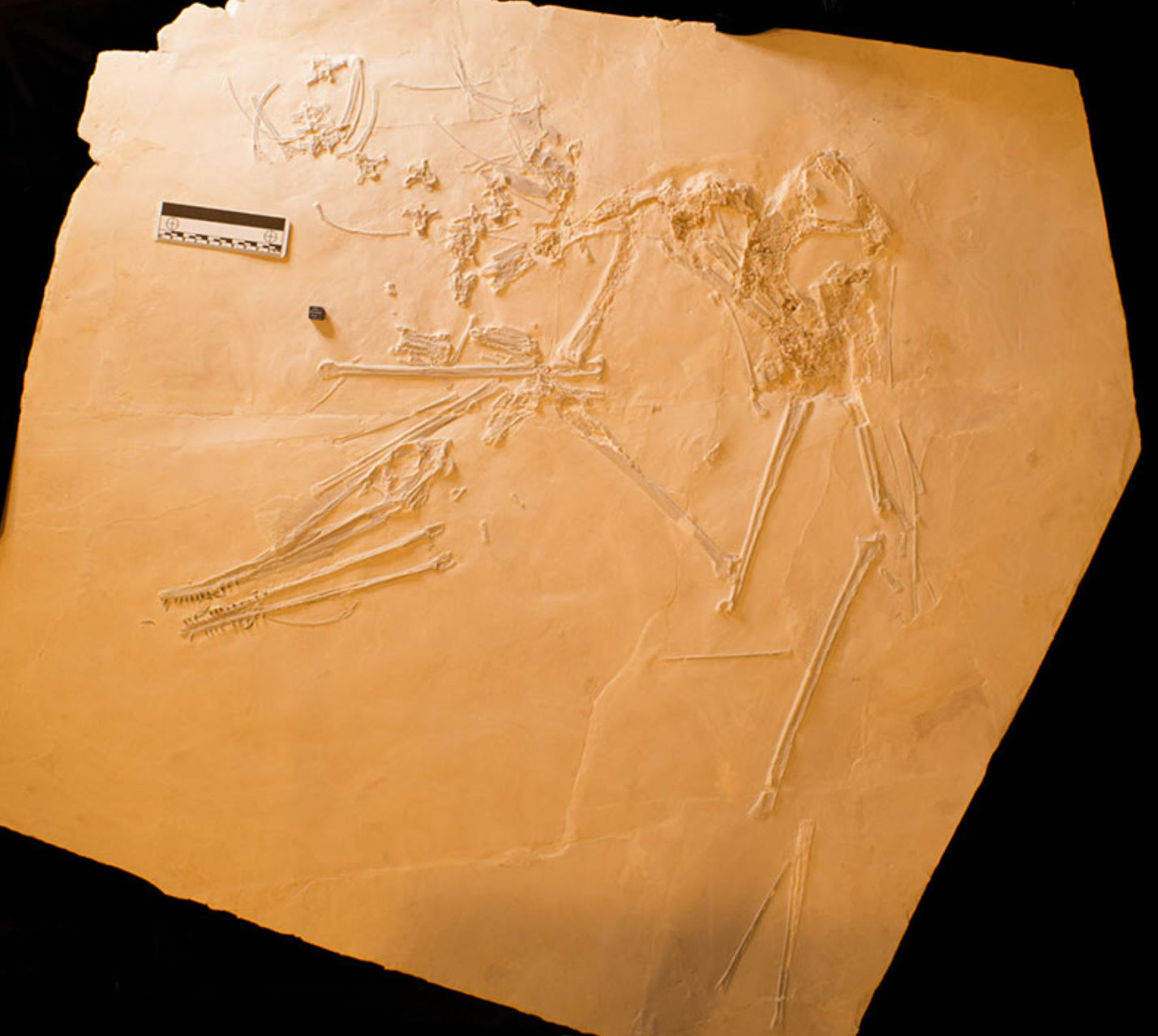Report by Prashasti Kulkarni
A 145-million-year-old pterosaur (a type of dinosaur) of the late-Jurassic era was discovered at a small quarry in Bavaria, Germany, by a team of researchers led by Dr. David Hone of Queen Mary University of London.
This pterosaur has been officially named Pterodactyle wellnhoferi, which roughly translates to “Wellnhofer’s stone finger,” after Peter Wellnhofer, a German paleontologist who was known for his work on pterosaurs. The researchers also gave the pterosaur the special nickname, “Elvis,” due to a large crest-like bulging on its skull, which reminded them of a pompadour (a sort of poofy hairstyle), commonly worn by Elvis Presley.
The large crest in the newly discovered pterosaur’s skull is not unusual, as is commonly seen in other species of pterosaurs from that age. However, the crest seemed to have had skin-like extensions protruding from it, making it larger than the other pterosaurs. A scan under a UV light helped the researchers determine that it was a sort of teenager, so it would have been even larger as a full-grown adult.
This pterosaur, which had a 2.1-meter wingspan, belonged to a larger species-group called “ctenochasmatids,” which is one of the most commonly seen species of their age. Ctenochasmatids, including the newly discovered pterosaur, were a species of small filter feeders (meaning they would find food from the water or air around them), and are thought to have lived near shallow seas, estuaries (the area where a freshwater stream or river meets the salty ocean), or lakes.
What separates the newly-discovered pterosaur from the rest of ctenochasmatids species, apart from the size of its crest, is a sort of extension located at the back part of its skull. This expansion allowed the pterosaur to have larger jaw muscles, leading to a stronger bite.


Due to its large crest, 2-meter wingspan and its extended skull, the pterosaur is one of the largest known animals of the ctenochasmatid group.
This discovery has helped scientists understand more about the animals that lived during the late-Jurassic era as the pterosaur species was one of the most important and common animals found from that age.
Credit for all images: https://palaeo-electronica.org/content/2023/3878-a-new-solnhofen-pterosaur

